Take a moment and imagine Ancient Greece or Ancient Rome. What do you see?
Magnificent temples, beautiful vistas, lots of togas, and maybe some pristine white statues of leaders and gods are things that all might come to mind. Maybe you've even seen some of those statues and temples yourself, all smooth, pearly-colored marble.
Except that those statues and temples, we now know, weren't plain white at all. In fact, they were so brightly painted and patterned that modern art historians were shocked — some even thought they were tacky!
But it's true. Thanks to advances in technology, historians can now use ultraviolet light to pick out the tiny remains of the pigments once used to paint the statues and sculptures of the ancient world, and using computer imaging, they can create a model of what the statues might have looked like over a millennium ago.
Seeing the statues with their bright coats of paint gives us a very different picture of the ancient world. It's like stepping back a little bit closer to those long-ago days, seeing them the way people would have as they passed them on the streets and celebrated them in temples.
And just like a recently unearthed mosaic with advice that's just as good now as it was 2,000 years ago, it makes the ancient world seem a little less distant and much more human.
Check the recreated statues out below, and let us know if you like the colors, or if you prefer the plain white look.
[H/T: Smithsonian, Bright Side]

When we think of Greek and Roman statues from the ancient past, we usually picture them like this.
Why? Well, simply because that's how we see them: plain, white, and serene.
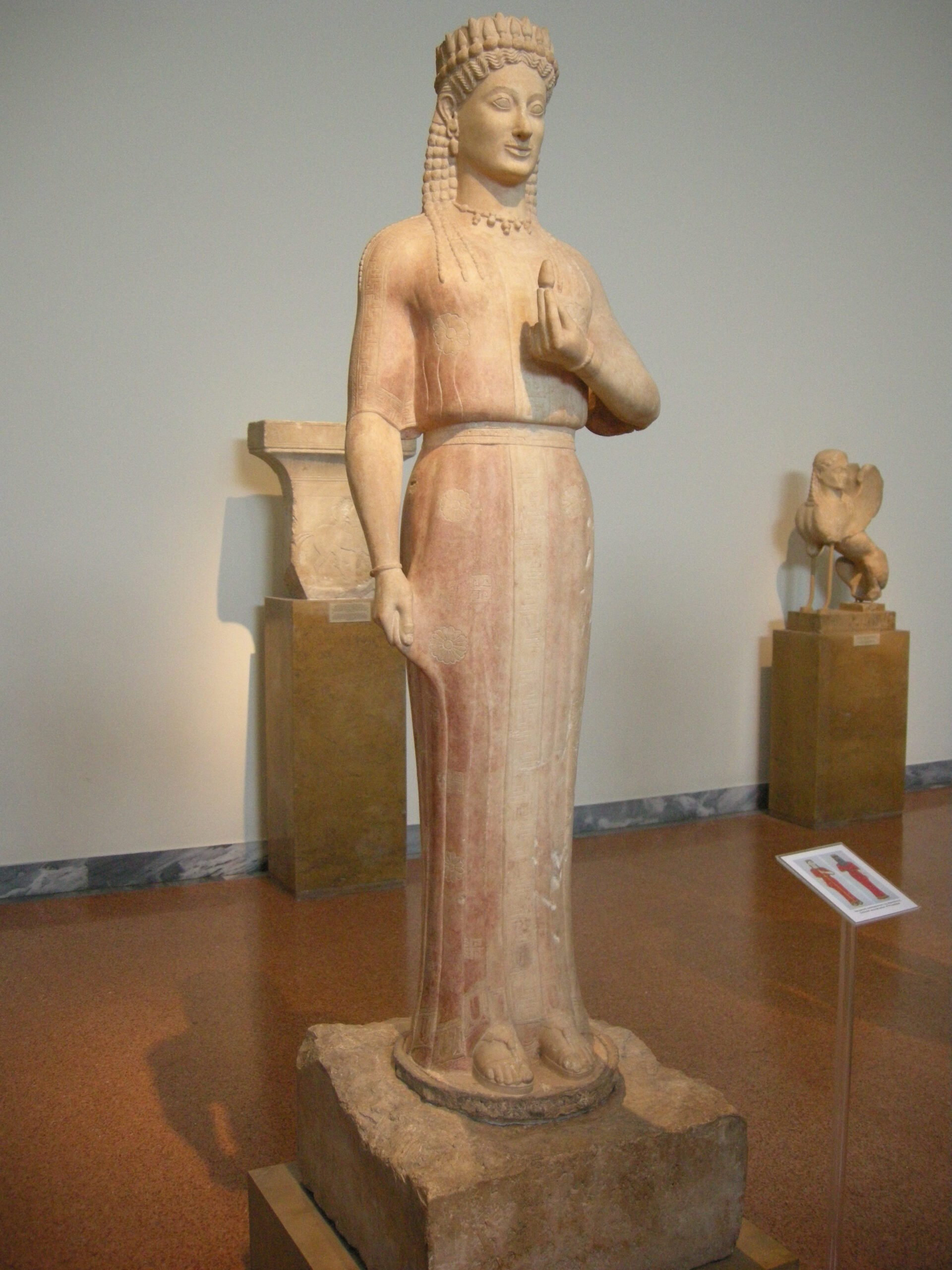
And for a long time, most people assumed they'd always looked like this.
It started a tradition of creating all-white or all one-color statues, the kind that many of us have seen in museums and in public spaces.
But that's not exactly how things were back in the days of old…

Historians have found that the statues actually looked more like this. This statue above is a reconstruction of the original, seen in the previous photo.
The statues were actually covered in bright paints, with gold accents and realistically painted faces and hair.
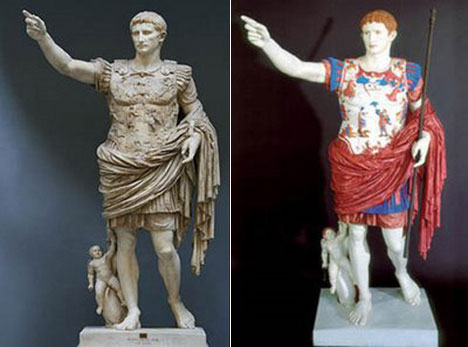
And the same went for the later Roman period, which saw just as much color and style.
This statue of the emperor Augustus looks very different in color than in somber monochrome.

Statues of emperors and other rulers would also be embellished with gold for some shine.

So, how do we know this? Thanks to UV imaging technology.
While the remains of the paints, which were made from mineral as well as organic material, are invisible to the naked eye, UV rays can detect them and let scientists know which kinds of pigments were used where, giving us a map of the original colors.
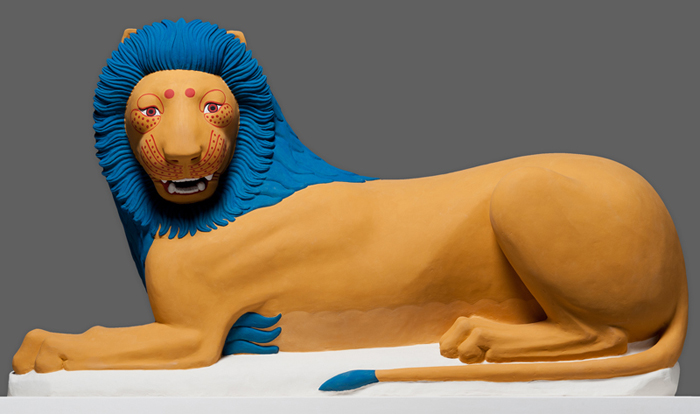
So while this stone lion appears plain brown to us today, this is what it looked like in Ancient Greece.
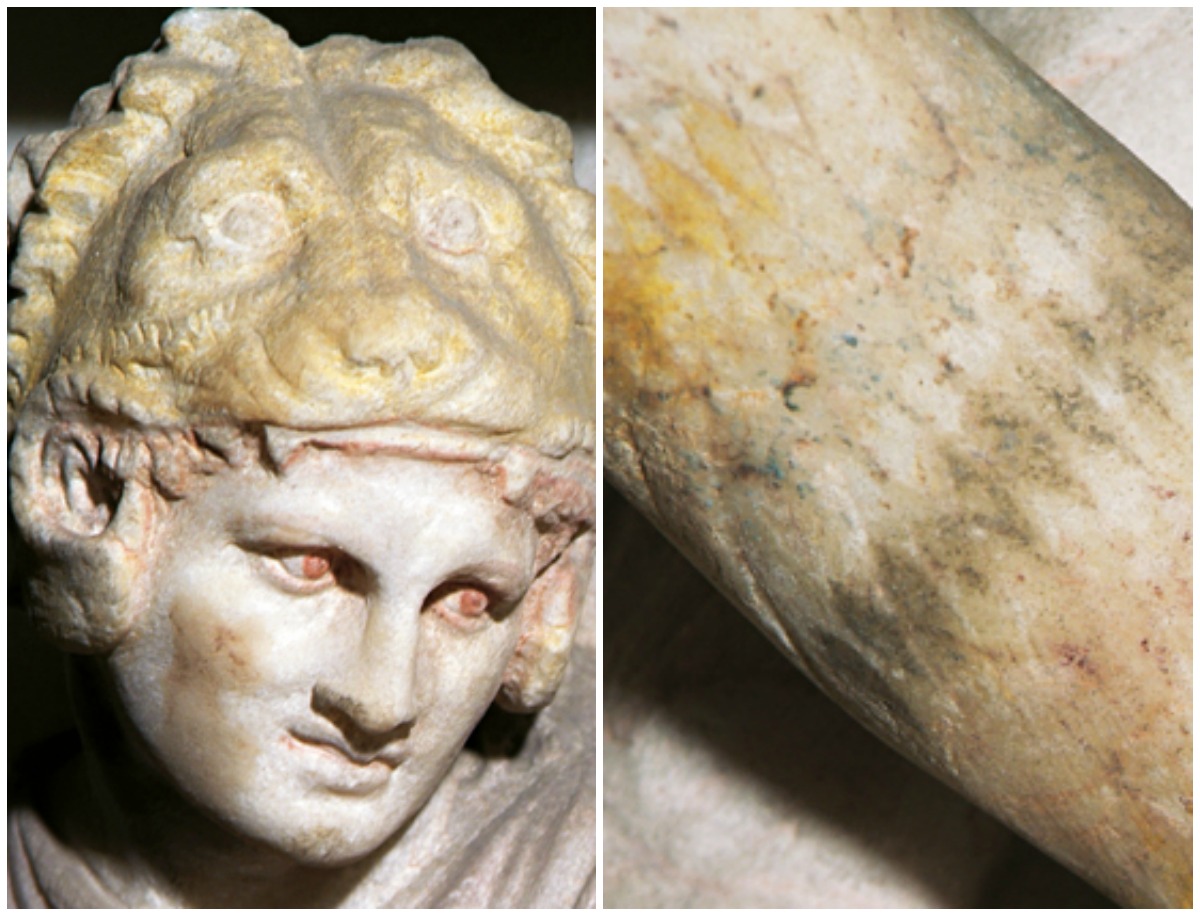
In this sculpture of Alexander the Great, you can almost make out the remains of some of the pigment.
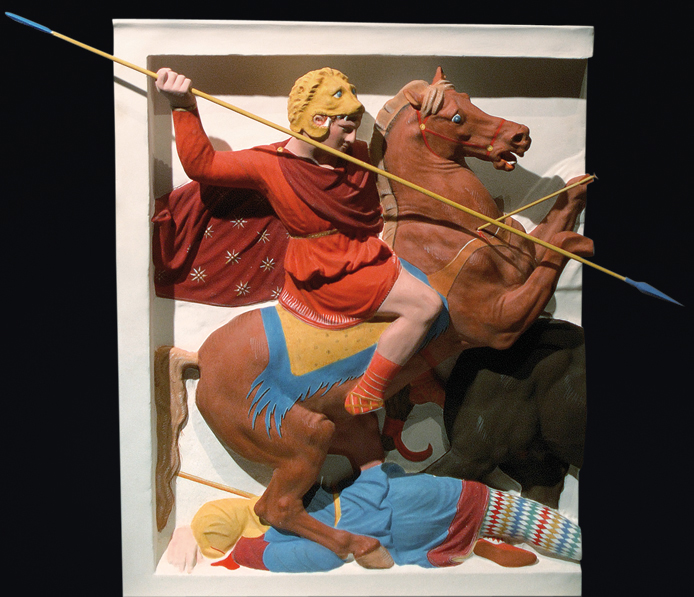
And this is what it would have looked like when it was created to celebrate Alexander's conquests.
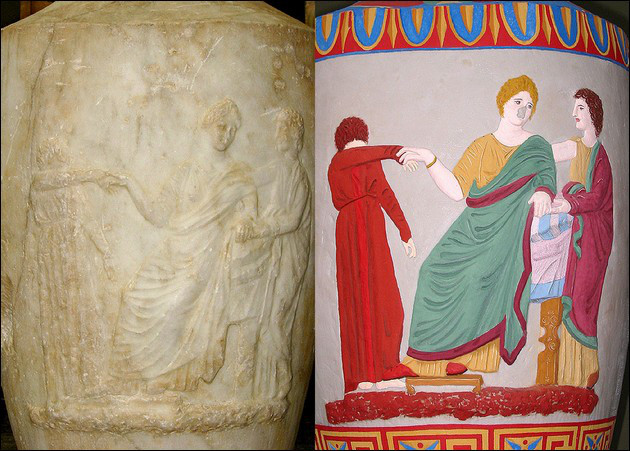
Carvings on columns and walls would have also gotten a similar treatment to freestanding statues, which would also make them a lot easier to see.
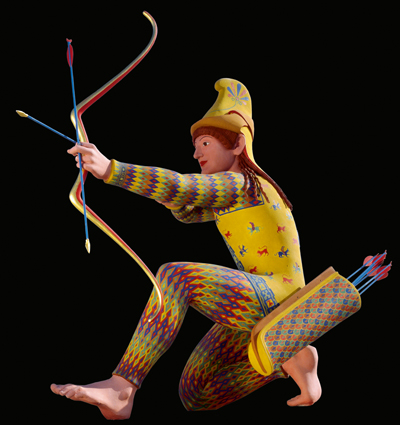
And it wasn't just bright colors. There was also a lot of patterns and designs included on the statues, too. This Trojan archer has leggings that would put modern yoga pants to shame!

Athena, goddess of warfare and wisdom, once sported a patterned cape, complete with a fringe made of snakes!
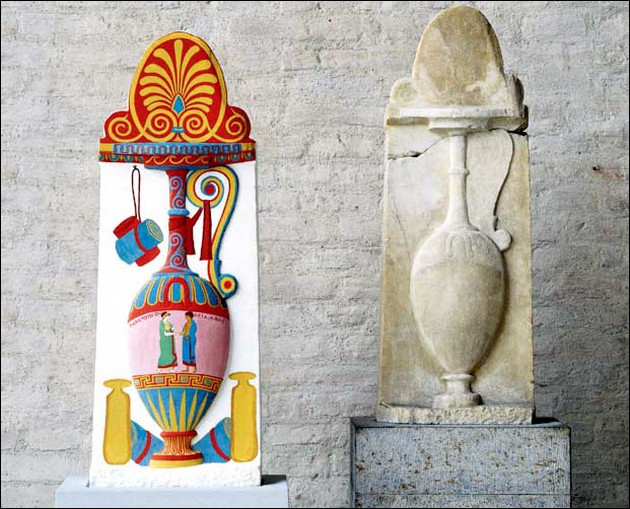
Even images of objects got a colorful treatment.
By tracing the remains of the pigments, historians can learn even more about the artistic tradition of the Ancient Greeks and Romans.
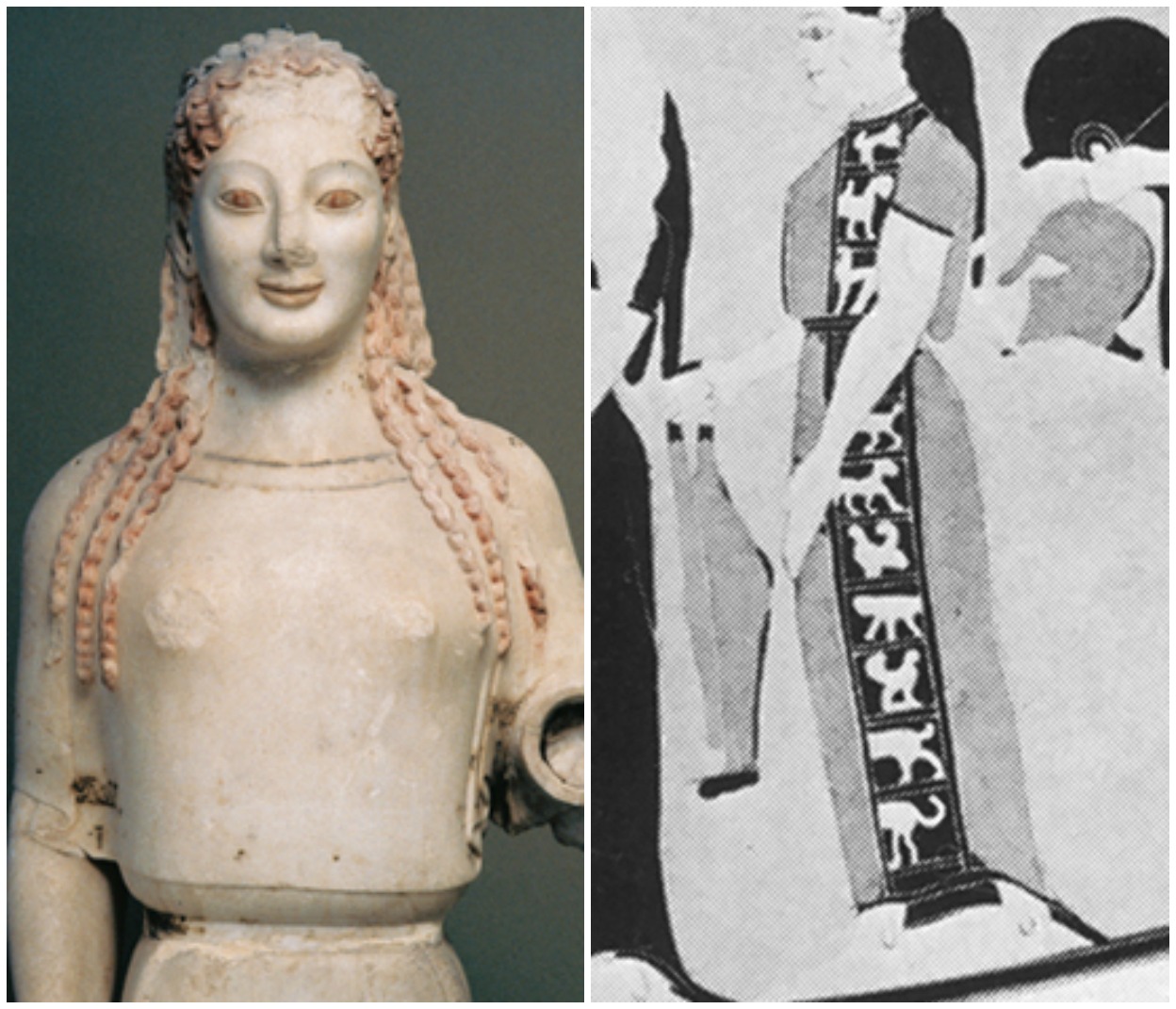
Historians also use other artwork to figure out what the statues, as well as people's clothing, might have looked like.
The painting on the right is on a vase, and shows a stripe of patterns down a woman's dress. You can also see some of the brown pigment that was used to color the statue's hair.
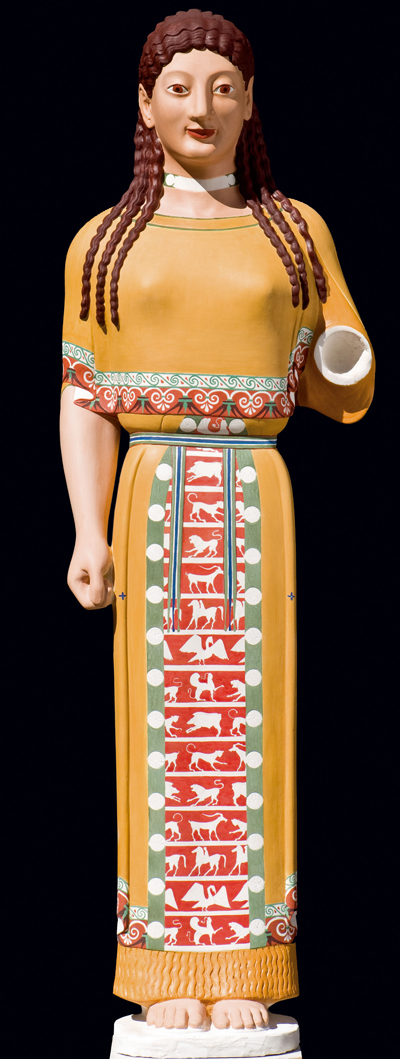
In the reconstruction of the statue, similar patterns were included.
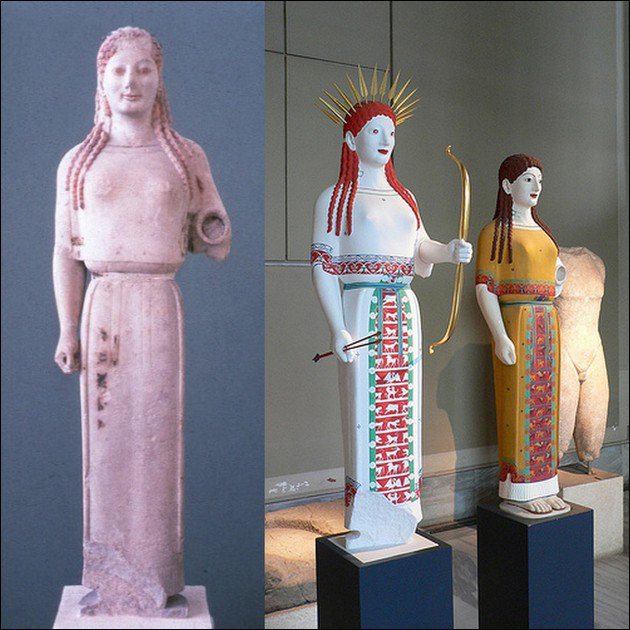
Of course, the reconstructions are open to some interpretation. Here are two versions of what this statue of a young woman might have looked like.
One version even includes her missing arm, a bow, arrows, and a crown.
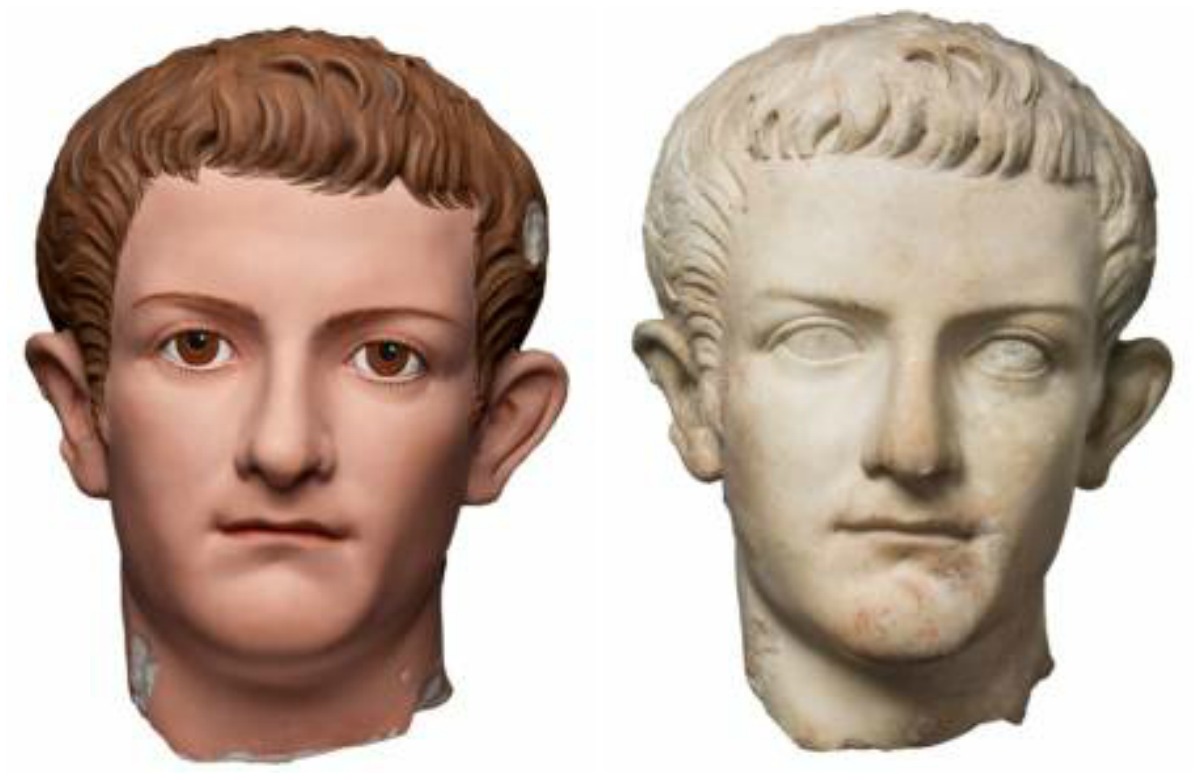
This reconstruction also gives us a better idea of what historical figures might have looked like.
The coloring on this bust of infamous Roman emperor Caligula shows his hair and eye color.

And bronze statues were quite a bit brighter, too! A layer called a patina would be applied to give the metal different colors and shines for different features, like hair and skin.
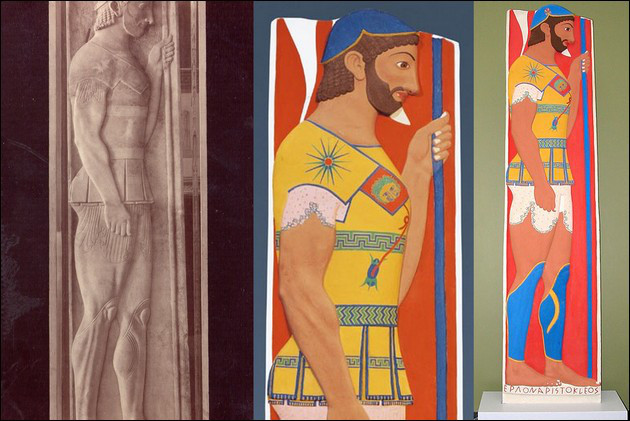
What do you think of these bright statues? Would you have liked to have seen them in their original, colorful glory, or do you prefer the stateliness of the plain white stone?
Let us know in the comments, and SHARE this fascinating slice of history with your friends!




